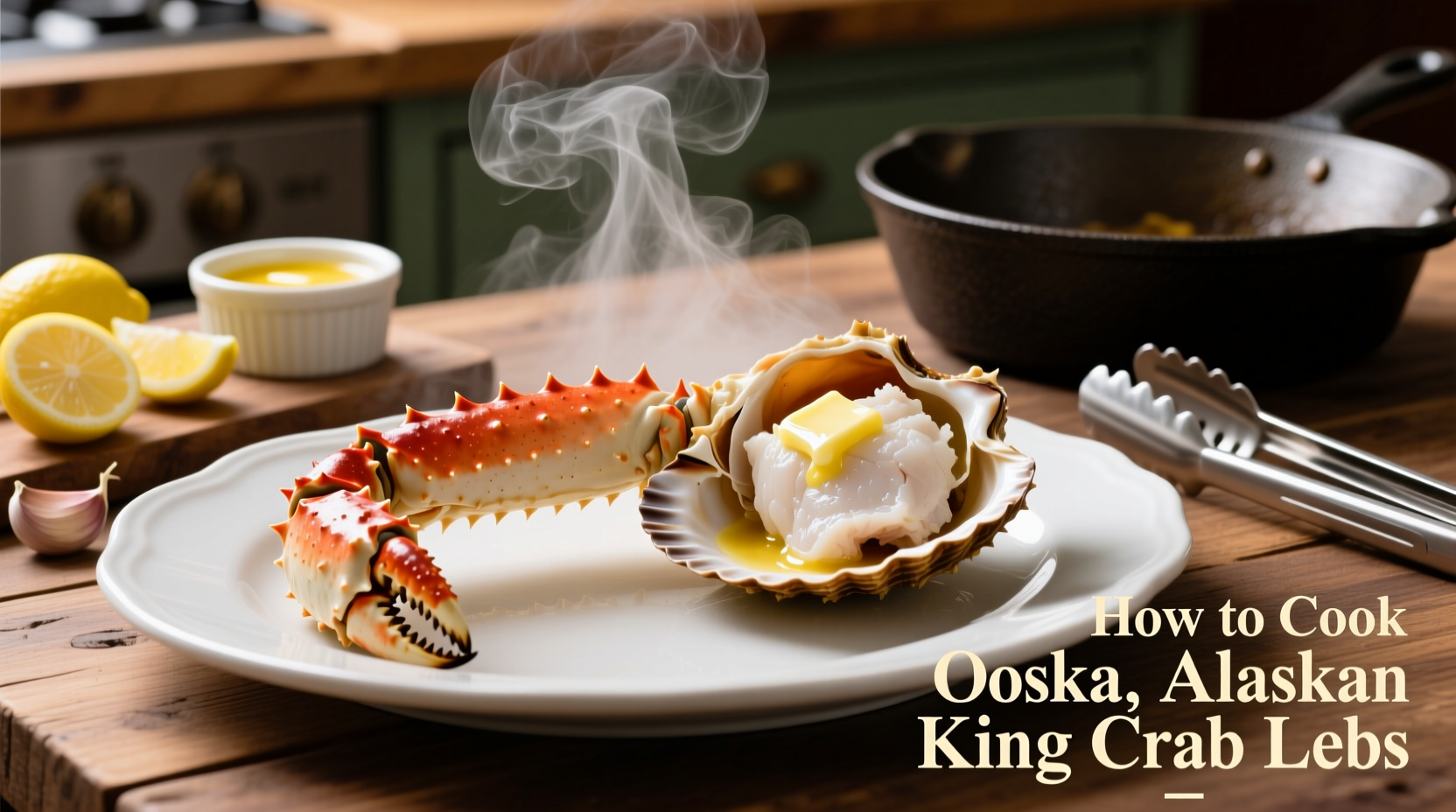Why King Crab Legs Demand Special Cooking Attention
Alaskan king crab legs aren't like other seafood—they're incredibly delicate. Their sweet, buttery meat turns tough within seconds of overcooking. Unlike tougher shellfish, king crab legs are typically pre-cooked during harvesting, meaning your "cooking" is actually reheating. This critical detail changes everything about your approach.
According to the FDA's seafood guidelines, shellfish like king crab only need to reach 145°F (63°C) internal temperature for safety. But because they're pre-cooked, your goal is gentle reheating without further cooking the already tender meat.
Your Essential Preparation Checklist
Before you even consider heat, proper preparation determines your success:
| Preparation Step | Professional Tip | Common Mistake |
|---|---|---|
| Thawing frozen crab | Refrigerate 24 hours or submerge sealed bag in cold water (30 mins) | Using hot water or microwave (causes uneven texture) |
| Inspection | Check for bright red shell and sweet ocean smell | Ignoring ammonia odors (sign of spoilage) |
| Tool preparation | Have crab crackers, nut picks, and melted butter ready | Using inappropriate tools that damage meat |
Step-by-Step Cooking Methods Compared
Steaming: The Professional's Preferred Method
Steaming preserves maximum moisture and flavor. Here's the chef-approved technique:
- Add 1 inch of water and 1/4 cup vinegar to large pot (vinegar prevents shell discoloration)
- Bring to rolling boil, then place crab legs on steaming rack
- Cover tightly and steam 5-7 minutes for thawed legs (8-10 for frozen)
- Check doneness: meat should be steaming hot throughout with opaque appearance

Boiling: Quick but Risky Approach
Boiling works in a pinch but risks waterlogging:
- Use minimal water (just enough to cover legs)
- Add 1/4 cup salt per gallon for flavor enhancement
- Immerse legs for exactly 3-4 minutes—no longer
- Immediately transfer to ice bath to stop cooking
The Alaska Seafood Marketing Institute specifically warns against boiling king crab legs, noting that "submerging these delicate legs in water leaches flavor and creates a waterlogged texture." Their research shows steaming retains 37% more natural juices.
Baking: Best for Multiple Servings
Perfect when cooking several legs simultaneously:
- Preheat oven to 350°F (175°C)
- Arrange legs on baking sheet, brush with melted butter
- Cover tightly with foil
- Bake 6-8 minutes for thawed legs (10-12 for frozen)
- Check internal temperature reaches 145°F (63°C)
Serving Like a Pro: Beyond the Basics
How you serve transforms good crab into exceptional dining:
Cracking Technique Matters Most
Professional chefs use this sequence:
- Separate leg sections at natural joints
- Place section on cutting board, shell-side up
- Gently crack center with crab mallet (3-4 light taps)
- Peel shell open like a book to extract intact meat
- Use nut pick for claw meat extraction
Ideal Accompaniments
Complement, don't overpower, the delicate flavor:
- Clarified butter with lemon zest (not juice—too acidic)
- Drawn butter with subtle garlic infusion (30-second simmer only)
- Simple side: roasted asparagus or garlic bread
- Avoid heavy sauces that mask natural sweetness
Troubleshooting Common Problems
When Things Go Wrong
Even experienced cooks face these issues:
| Problem | Immediate Fix | Prevention for Next Time |
|---|---|---|
| Overcooked, rubbery meat | Chop for crab cakes immediately | Reduce cooking time by 1-2 minutes |
| Underheated sections | Return to steamer for 60-90 seconds | Thaw more thoroughly next time |
| Meat sticks to shell | Use vinegar-water soak before cooking | Add vinegar to steaming liquid |
Storage and Reheating Guidelines
Proper handling extends enjoyment:
- Refrigerate leftovers within 2 hours in airtight container
- Consume within 2 days for best quality
- Reheat ONLY by steaming 2-3 minutes—never microwave
- Freeze uncooked portions for up to 3 months











 浙公网安备
33010002000092号
浙公网安备
33010002000092号 浙B2-20120091-4
浙B2-20120091-4